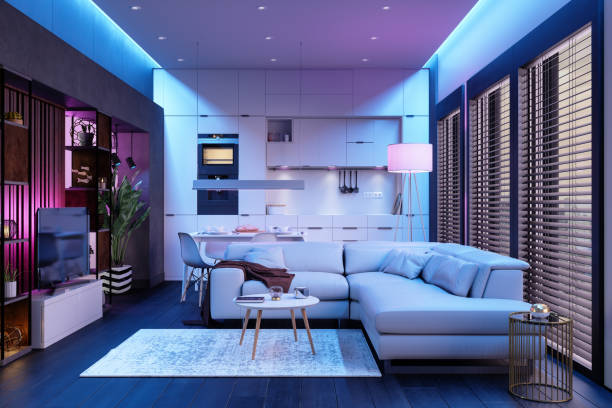Introduction:
The concept of smart homes has been around for quite some time, but it is only in recent years that technology has advanced to the point where it is becoming a reality for many people. The Internet of Things (IoT) is one of the key technologies driving this change. IoT is a network of devices that are connected to the internet and can communicate with each other. This technology is being used to create a new generation of home automation systems that are more advanced, more convenient, and more affordable than ever before. In this article, we will explore the future of smart homes and how IoT is revolutionizing home automation.
Automating Home Systems
One of the most obvious ways that IoT is being used in smart homes is to automate home systems. This includes things like lighting, heating, and security. For example, an IoT-enabled thermostat can be programmed to adjust the temperature in your home based on your schedule, or you can control the lights in your home from your phone. This can make your home more comfortable and energy-efficient, and it can also make it more convenient to control different systems in your home.

Creating a More Connected Home
Another key area where IoT is being used in smart homes is to create a more connected home. This means that different devices in your home can communicate with each other and work together to provide a more seamless and convenient experience. For example, an IoT-enabled security camera can be connected to your phone, so you can see who is at your front door even when you’re not at home. Or you can use an IoT-enabled speaker to play music throughout your home. This connectedness can make it easier to control different systems in your home and make it more convenient to use different devices.
Enhancing Home Security
IoT is also being used to enhance home security. Smart security cameras, door locks, and motion sensors can all be connected to the internet and controlled from your phone. This means that you can keep an eye on your home even when you’re not there, and you can also receive alerts if something suspicious is happening. Additionally, you can also use IoT-enabled devices to control access to your home, such as granting access to cleaning services or delivery personnel, without the need to be there physically.
Improving Energy Efficiency
IoT is also being used to improve energy efficiency in smart homes. Smart thermostats, lights, and appliances can all be controlled from your phone, which means you can make sure that they are only being used when you need them. This can help you to save money on your energy bills and reduce your carbon footprint. Additionally, IoT-enabled devices can also help you to monitor energy usage in your home, so you can identify areas where you can make changes to reduce energy consumption.
Creating a More Comfortable Home
IoT is also being used to create a more comfortable home. Smart thermostats and lighting can be programmed to adjust to your schedule, so your home is always at the right temperature and lighting level when you’re there. Additionally, IoT-enabled devices can also help you to monitor the air quality in your home, so you can take steps to improve it if necessary. This can make your home more comfortable and healthier to live in.
Enabling Remote Monitoring and Control
IoT is also enabling remote monitoring and control of smart homes. This means you can control different systems in your home from anywhere, using your phone or computer. This can be especially useful if you’re away from home for an extended period of time, as you can check on your home and make sure everything is running smoothly. Additionally, you can also use remote monitoring and control to make sure that your home is secure and that your energy usage is as efficient as possible.
Conclusion:
The future of smart homes is being shaped by the Internet of Things (IoT). This technology is revolutionizing home automation by making it more advanced, more convenient, and more affordable than ever before. IoT is being used to automate home systems, create a more connected home, enhance home security, improve energy efficiency, create a more comfortable home, and enable remote monitoring and control. With the continued advancements in IoT technology, we can expect to see even more innovative and practical applications in smart homes in the future. As a result, smart homes are becoming more accessible to a wider range of people, making them a practical and desirable option for many homeowners.

